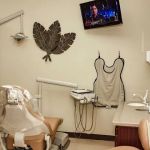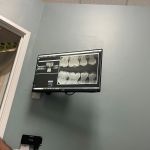How to Care for Teeth After Getting Braces
- 1. The Importance of Oral Care After Getting Braces
- 2. Brushing and Flossing with Braces
- 3. Managing Braces Pain and Discomfort
- 4. Dietary Restrictions After Getting Braces
- 5. Regular Check-ups and Maintenance After Getting Braces
- 6. Products to Aid in Teeth Care with Braces
1. The Importance of Oral Care After Getting Braces
Getting braces is an exciting step toward achieving a straighter, more confident smile, but the journey doesn’t stop there. Proper oral care after getting braces is essential to ensure that your teeth and gums stay healthy throughout the treatment process. With braces, your teeth may be more prone to plaque buildup, cavities, and gum disease, which is why maintaining good oral hygiene is even more important during this time. Neglecting oral care can lead to long-term dental issues, such as permanent stains on your teeth or even tooth decay.
Braces work by gradually shifting your teeth into their correct positions, but this process requires your full attention and commitment to maintaining your oral hygiene routine. In this article, we will cover the key steps and tips for taking care of your teeth after getting braces, helping you keep your teeth healthy and your smile bright.
2. Brushing and Flossing with Braces
Brushing and flossing are crucial components of oral care at any time, but they become even more critical when you have braces. Braces create small spaces between the brackets and wires where food particles and plaque can accumulate. If these aren’t properly cleaned, they can lead to cavities and gum disease. So, how can you effectively brush and floss with braces?
Brushing with Braces: Use a soft-bristled toothbrush to clean your teeth and braces. Brush at least twice a day, and make sure to angle your brush to clean around the brackets and wires. The American Association of Orthodontists recommends brushing for at least two minutes to thoroughly clean all surfaces of your teeth. Make sure to replace your toothbrush regularly to ensure it remains effective.
Flossing with Braces: Flossing may be more challenging with braces, but it is still necessary. You can use a floss threader or orthodontic floss, which is designed to make flossing easier around your braces. Be sure to gently floss between each tooth and around each bracket to remove trapped food particles. Alternatively, you can also use an interdental brush or a water flosser, which can be more effective at cleaning around braces.
By maintaining a consistent and thorough brushing and flossing routine, you will help prevent plaque buildup and ensure that your teeth stay healthy throughout your braces treatment.
3. Managing Braces Pain and Discomfort
It’s common to experience some discomfort after getting braces, especially in the first few days. Your teeth and gums may feel sore as they begin to adjust to the pressure applied by the braces. Additionally, the brackets and wires can sometimes cause irritation to the inside of your mouth. However, there are several strategies you can use to manage this discomfort effectively.
Over-the-Counter Pain Relief: If you experience pain, you can take over-the-counter pain relievers such as ibuprofen or acetaminophen to help reduce discomfort. Always follow the dosing instructions, and consult your dentist or orthodontist if you're unsure about which medication is best for you.
Wax for Braces: Orthodontic wax can be used to cover any areas of your braces that are causing irritation inside your mouth. Simply break off a small piece of the wax, roll it into a ball, and place it over the brackets or wires that are causing discomfort. This provides a smooth surface that can help reduce irritation.
Soft Foods: During the first few days after getting braces or after any adjustments, you may find it helpful to eat softer foods that are easier to chew, such as yogurt, mashed potatoes, or soup. This can help prevent further irritation and give your mouth time to adjust to the new braces.
While discomfort is normal, it should gradually subside as your teeth and mouth adjust to the braces. If the pain persists or becomes unbearable, be sure to consult your orthodontist for further guidance.
4. Dietary Restrictions After Getting Braces
One of the most significant adjustments when you get braces is changing your eating habits. Certain foods can damage your braces or get stuck in them, leading to plaque buildup and cavities. To keep your braces intact and your teeth healthy, it’s important to avoid certain foods and follow specific dietary guidelines.
- Avoid Sticky Foods: Sticky foods like gum, caramel, and taffy can get stuck in your braces and are difficult to remove. They can also cause damage to the wires and brackets, which may require additional visits to the orthodontist for repairs.
- Avoid Hard Foods: Hard foods such as nuts, popcorn, and hard candy can damage the brackets or wires. It’s best to cut these foods into smaller pieces or avoid them altogether while wearing braces.
- Cutting and Chewing Carefully: When eating foods like apples or raw carrots, cut them into small, bite-sized pieces to make it easier to chew. Biting directly into large, hard foods can put unnecessary pressure on your braces.
While it may take some time to adjust to these dietary restrictions, maintaining a healthy diet is crucial for your dental health. Focus on eating a variety of soft, nutritious foods to support your teeth and gums during the braces process.
5. Regular Check-ups and Maintenance After Getting Braces
Regular check-ups with your orthodontist are essential for ensuring that your braces are working properly and that your teeth are moving as expected. Typically, orthodontic appointments are scheduled every 4 to 6 weeks. During these visits, your orthodontist will adjust your braces, check for any issues, and provide you with the care instructions you need to keep your braces clean and effective.
It’s important to attend all scheduled appointments, as missed or delayed appointments can extend the duration of your treatment. Your orthodontist will also provide you with reminders about maintaining your braces and advise you on any additional care you may need as you progress through your treatment.
By maintaining regular check-ups, you ensure that your braces continue to function effectively, helping you achieve the desired results in the shortest amount of time possible.
6. Products to Aid in Teeth Care with Braces
Several products can make taking care of your teeth while wearing braces much easier. Some of these items are specifically designed for people with braces and can help improve oral hygiene. Here are a few essential products to consider:
- Orthodontic Toothbrush: A toothbrush with a special design, such as a V-shaped bristle pattern, can help you clean around brackets and wires more effectively.
- Water Flosser: A water flosser is an excellent tool for cleaning between teeth and around braces. It uses a stream of pulsating water to remove food particles and plaque from hard-to-reach areas.
- Floss Threaders: Floss threaders help guide dental floss between the braces, making it easier to floss around your brackets and wires.
These products can help you maintain a clean, healthy mouth throughout your braces treatment, ensuring your teeth remain strong and free from plaque buildup.
For more tips and guidance on taking care of your teeth with braces, visit Dentistry Toothtruth for expert advice and products to help you throughout your orthodontic journey.







 Dr. Kenneth J. Kalil0.0 (0 review)
Dr. Kenneth J. Kalil0.0 (0 review) Access Dental Group Manhattan PLLC3.0 (18 review)
Access Dental Group Manhattan PLLC3.0 (18 review) Jewel Dental Schaumburg5.0 (47 review)
Jewel Dental Schaumburg5.0 (47 review) White Smiles Family Dental4.0 (74 review)
White Smiles Family Dental4.0 (74 review) Assure Dental of Colton4.0 (290 review)
Assure Dental of Colton4.0 (290 review) New Roc Dental: Ovral Wynter, DDS4.0 (138 review)
New Roc Dental: Ovral Wynter, DDS4.0 (138 review) The Importance of Oral Health Education During Pregnancy for a Healthy Pregnancy
The Importance of Oral Health Education During Pregnancy for a Healthy Pregnancy Best Tips for Brushing Your Teeth Properly for Healthy Gums: Essential Techniques for Oral Health
Best Tips for Brushing Your Teeth Properly for Healthy Gums: Essential Techniques for Oral Health Why Skipping Dental Checkups Can Lead to Bigger Oral Health Problems
Why Skipping Dental Checkups Can Lead to Bigger Oral Health Problems Advantages of Porcelain Dental Restorations
Advantages of Porcelain Dental Restorations How Can Diabetes Cause Tooth and Gum Problems? Preventing and Managing Oral Health Issues
How Can Diabetes Cause Tooth and Gum Problems? Preventing and Managing Oral Health Issues Healthy Habits for Promoting Good Oral Health and Hygiene: Tips for a Healthy Smile
Healthy Habits for Promoting Good Oral Health and Hygiene: Tips for a Healthy Smile